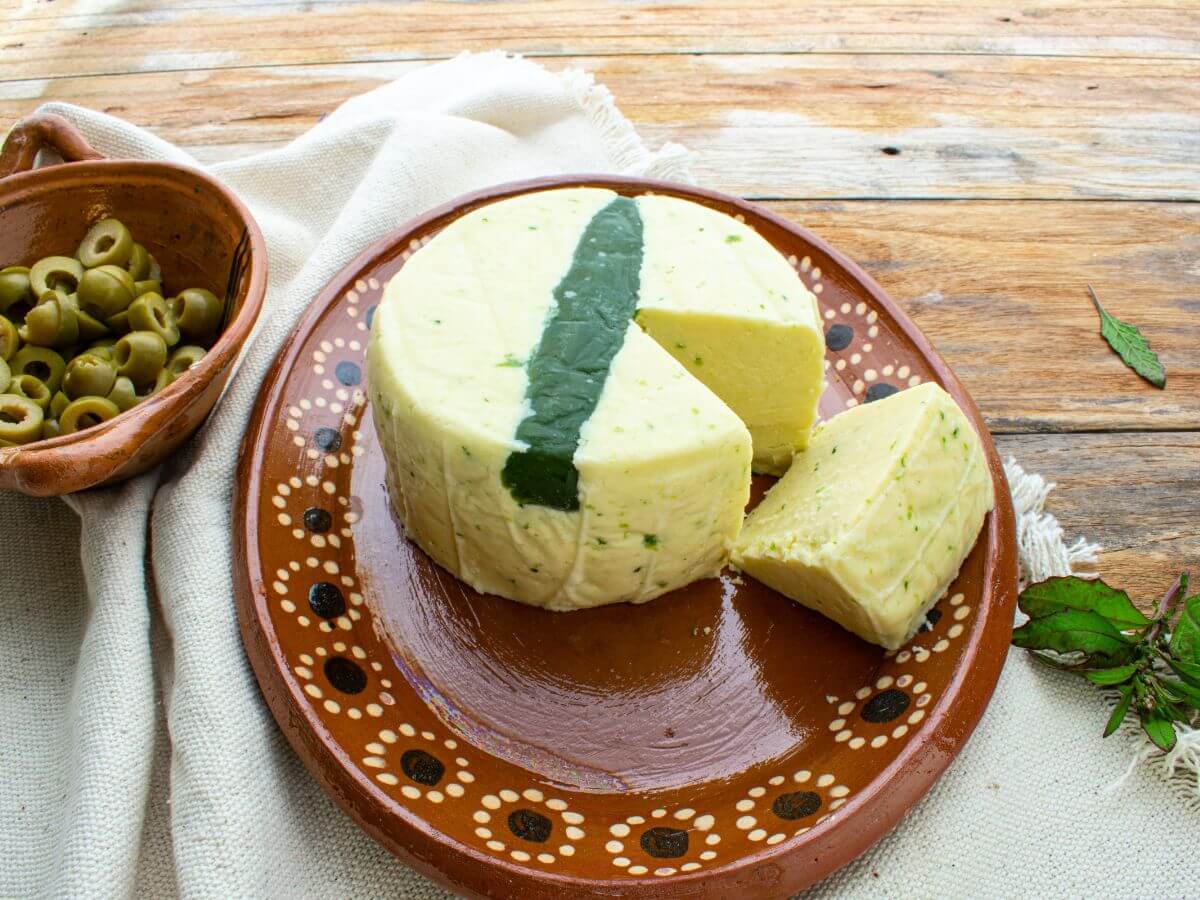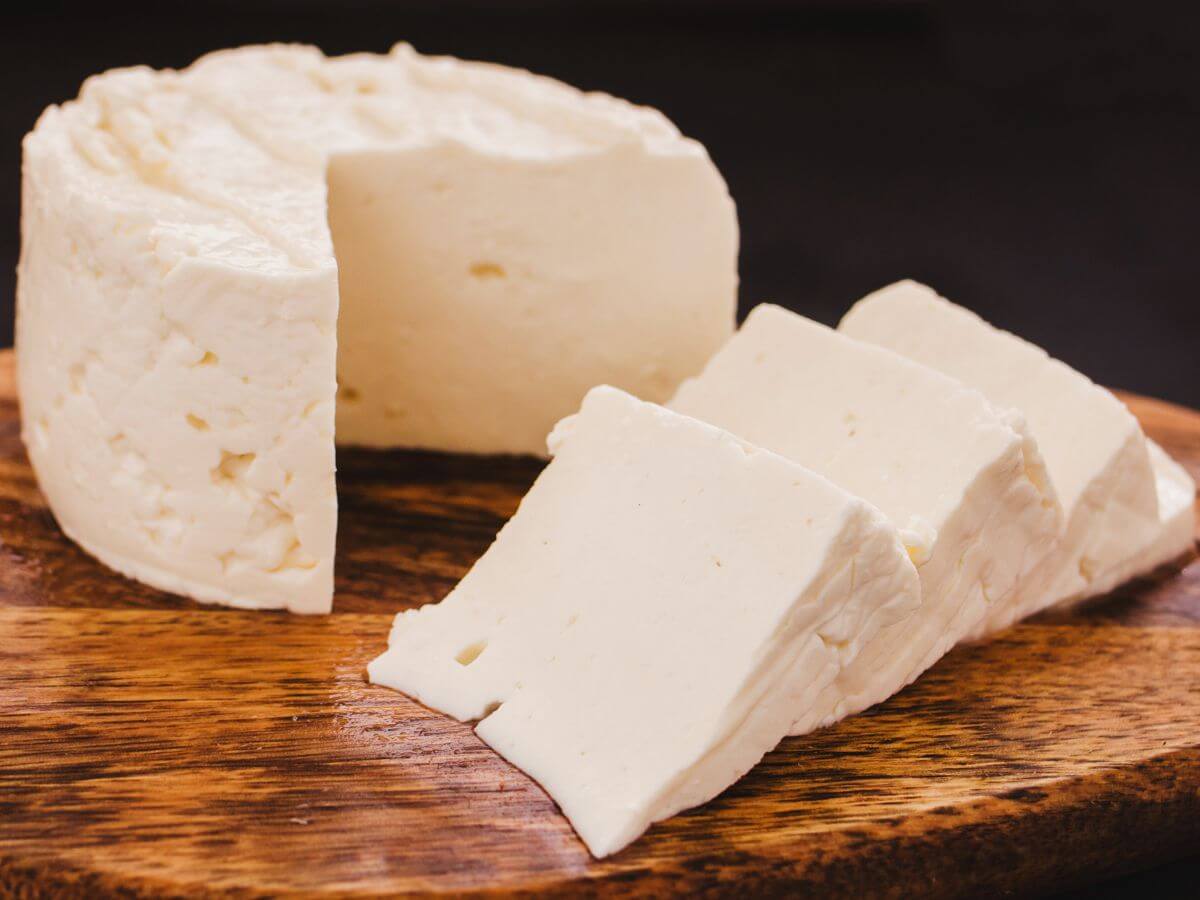Melty, Stretchy, Delicious: Exploring the World of Asadero Cheese
Contents
Asadero cheese, also known as queso asadero, is a type of stringy cheese that is commonly used in Mexican cuisine. It has a creamy texture and melts easily, making it perfect for dishes such as quesadillas, enchiladas, and nachos.
Asadero is a popular choice among cheese lovers due to its unique flavor profile and versatility in cooking.
Brief history of Asadero Cheese
Asadero cheese has been around for centuries and has played an important role in the culinary traditions of Mexico. Its origins can be traced back to the northern region of Mexico where cattle farming was prevalent.
The early Mexican cowboys or vaqueros were responsible for producing this delicious melted cheese that became increasingly popular throughout the country.
Over time, different regions developed their own variations of the traditional recipe according to local tastes and preferences. Nowadays, you can find many variations of this cheese all over Mexico as well as in other parts of the world.

Definition and characteristics of Asadero Cheese
Asadero cheese is a semi-soft Mexican-style cheese that’s made from cow’s milk. It belongs to the pasta filata family which means it’s a stretched curd cheese that has been kneaded and shaped into balls or blocks.
The texture of Asadero ranges from soft to medium-soft depending on its age and production method. It has a mild yet distinct flavor with nutty undertones that make it stand out from other cheeses.
Apart from being used in traditional Mexican dishes, Asadero also pairs well with wine or beer making it an excellent choice for appetizers or snacks. Its versatility allows it to be easily incorporated into various recipes while adding rich flavor and creaminess to any dish.
How Asadero Cheese is Made
Asadero Cheese is a semi-soft cheese that originated in Mexico. It has a mild, slightly salty taste and a texture similar to Mozzarella. The process of making Asadero Cheese involves several steps that must be carefully followed to achieve the desired taste and texture.

Milk Selection and Pasteurization Process
The first step in making Asadero Cheese is selecting the milk. The milk must be fresh and of good quality to ensure that the cheese will have a good flavor. The milk is then pasteurized at a high temperature to kill any harmful bacteria.
Coagulation and Curd Formation
Once the milk has been pasteurized, rennet or an acid such as vinegar or lemon juice is added to it. This causes the proteins in the milk to coagulate and form curds. The curds are then cut into small pieces, which allows them to release more whey.
Draining, Stretching, and Shaping of the Cheese
The curds are then drained using cheesecloth or a fine-mesh strainer. Once most of the whey has been removed, the curds are stretched by heating them in hot water until they become pliable.
This process gives Asadero Cheese its characteristic stretchy texture. After stretching, the cheese can be shaped into balls or logs while it’s still warm and soft, giving it its distinct shape.
It can also be molded into other shapes as desired by pressing it into molds while still warm.
Making Asadero Cheese requires careful attention to detail at each stage in order to produce this beloved semi-soft cheese with its delicious mild flavor and characteristic texture that adds depth of flavor when used in many dishes such as quesadillas, empanadas or even pizzas!
Types of Asadero Cheese
Asadero cheese is a versatile cheese that can be used in a wide variety of dishes. There are many different types of Asadero cheese that are available, each with their own unique flavor and characteristics.
Some of the most common types of Asadero cheese include traditional Mexican Asadero, American-style Asadero, and variations in texture, flavor, and melting properties.

Traditional Mexican Asadero
Traditional Mexican Asadero cheese is made using raw milk and is aged for a period of time to develop its distinct flavor. This type of Asadero cheese has a smooth texture and is often used in Mexican cuisine, such as tacos or quesadillas. It has a slightly sweet taste and is known for its exceptional melting properties.
American-style Asadero
American-style Asadero cheese is made using pasteurized milk and has a milder flavor than traditional Mexican Asadero. This type of Asadero cheese tends to have a creamier texture than its Mexican counterpart, making it perfect for use in dishes like macaroni and cheese or grilled sandwiches.
Variations in Texture, Flavor, and Melting Properties
There are many different variations on the classic recipe for Asadero cheese that can result in different textures, flavors, and melting properties. Some varieties may be aged longer than others or may be smoked to create a unique smoky flavor.
Other types may have additional ingredients added to them such as jalapenos or herbs to add an extra kick. The melting properties of different types of Asaderos can vary widely depending on factors such as aging time and moisture content.
While some varieties may melt easily when heated up while others might retain their shape even when exposed to high temperatures. Whether you prefer traditional Mexican-style or American-style versions or enjoy experimenting with different varieties with varying textures or smoky flavors there is an Asadero cheese that is perfect for every occasion.
Culinary Uses for Asadero Cheese
Melting properties for use in dishes such as quesadillas, enchiladas, and nachos
Asadero cheese has the perfect melting properties for use in a variety of dishes. It melts smoothly and evenly, while still maintaining its shape and texture.

This makes it ideal for use in Mexican classics like quesadillas, enchiladas, and nachos. When melted, it becomes stringy and gooey, adding a creamy texture to the dish.
For quesadillas, simply place a few slices of Asadero cheese on top of a tortilla and cook until melted. For enchiladas or nachos, sprinkle shredded Asadero cheese over the top of your creation before baking or broiling until bubbly.
Grilling or frying for use in sandwiches or burgers
Asadero cheese is also great for grilling or frying. Its mild flavor pairs well with many ingredients and provides a creamy contrast to grilled meats or vegetables.
It can be used as a filling inside burgers or sliced thin on top of grilled chicken sandwiches. To fry Asadero cheese to perfection, slice it into thick pieces about 1/4 inch thickness.

Dredge each slice in flour then dip in lightly beaten egg before coating with panko breadcrumbs. fry the slices until golden brown on each side – this delightful snack is called “Queso Frito.”
Use as a topping for soups or salads
Asadero cheese can also be used as a topping for soups or salads to add extra flavor and creaminess to these dishes. Simply grate some Asadero over your favorite soup like tomato soup will add an extra level of richness to it! Tossing shredded Asadero onto salad greens along with some cherry tomatoes will give your salad an instant upgrade!
Not only is Asadero cheese versatile in its usage, but it also has a unique flavor profile that can take your dishes to the next level. Try experimenting with Asadero cheese in your meals and discover new and exciting ways to enjoy its incredible melting properties!
Pairing Suggestions with Asadero Cheese
Asadero cheese is a versatile cheese that pairs well with a variety of beverages, both alcoholic and non-alcoholic. Wine aficionados can enjoy a glass of Chardonnay or Sauvignon Blanc with their Asadero cheese dishes for the perfect pairing.
Chardonnay has a crisp acidity that complements the creaminess of the cheese, while Sauvignon Blanc has a bright and refreshing flavor that enhances the subtle flavors of Asadero. For beer lovers, Pilsner or Lager are excellent options to pair with this cheese.
The lightness of these beers doesn’t overpower the flavors of Asadero but instead enhances them. The effervescence in Pilsners and Lagers helps cut through the richness of the cheese, leaving your palate refreshed after each bite.
Fun Facts about Asadero Cheese
The name “Asadero” comes from the Spanish word “asar” which means “to roast”. This name was given to this type of cheese because traditionally it was used as an ingredient in roasted dishes such as quesadillas and tacos al pastor. The creation of Asadero cheese dates back to Mexico’s colonial period when Spaniards introduced cheesemaking techniques to Mexico.
Since then, different variations have been developed throughout Mexico and in other parts of the world like America. One interesting fact about this type of cheese is its unique texture.
Unlike other cheeses like cheddar or Swiss which are hard and crumbly, Asadero’s texture is soft and stringy, making it perfect for melting in dishes such as quesadillas, pizzas and burgers. Asadero is also known for its mild flavor profile which makes it an ideal ingredient in various dishes without overpowering other flavors.
Conclusion
If you’re looking for a versatile yet delicious cheese option for your recipes then Asadero cheese is an excellent choice. With its soft texture and mild flavor, it complements a variety of dishes ranging from traditional Mexican cuisine to modern fusion dishes.
Plus, with the right pairing, Asadero can elevate your culinary experience to a whole new level. So why not give Asadero cheese a try and take your taste buds on a journey today!

